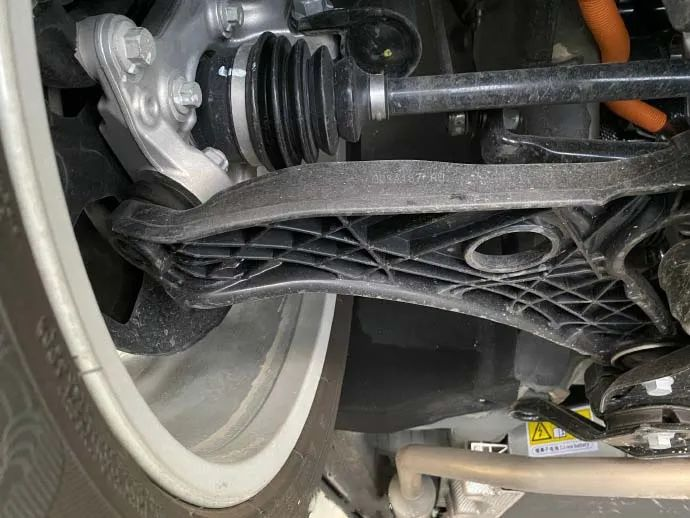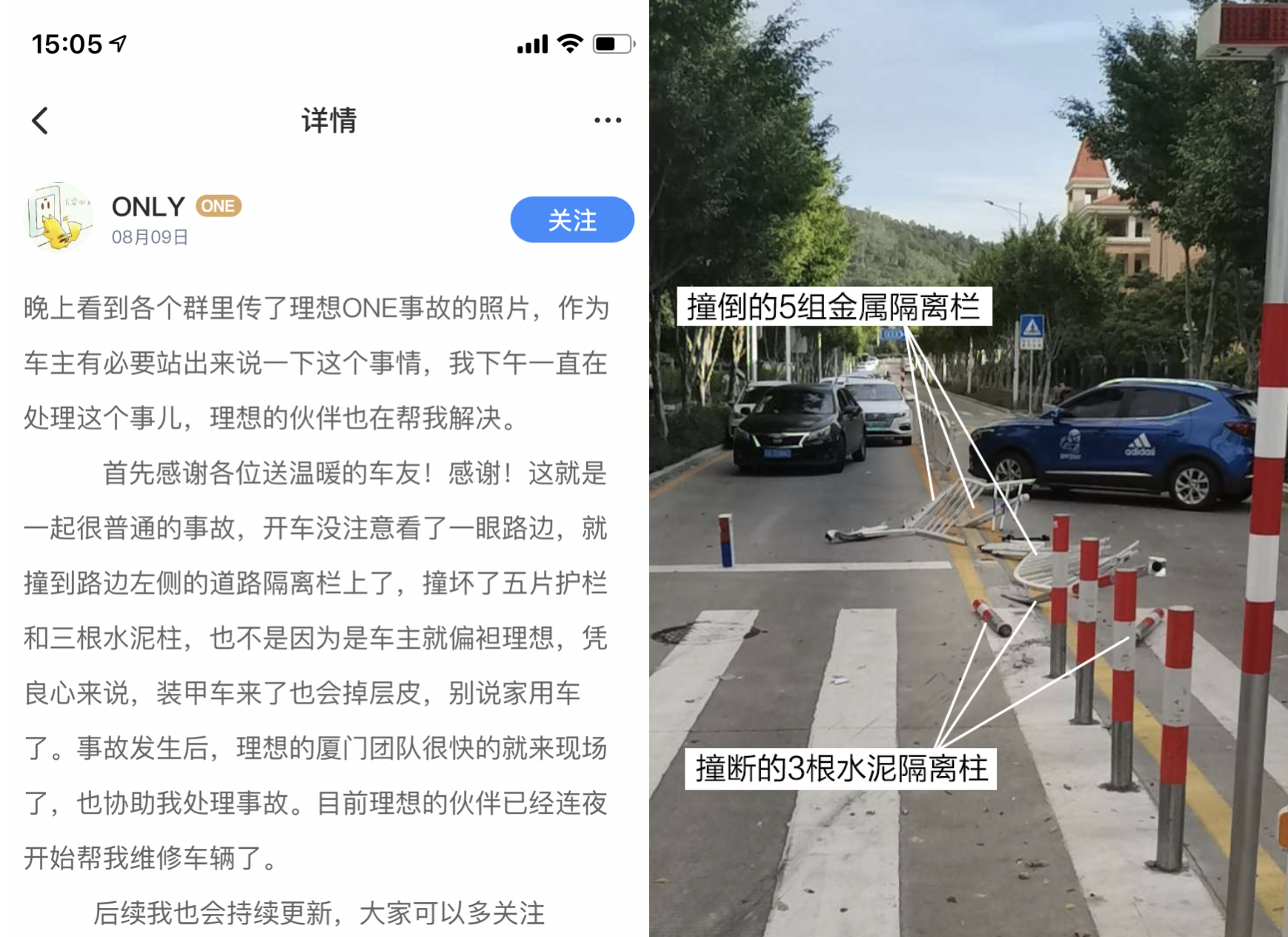Today, Ideal Motors released a statement regarding the false report of the Xiamen accident. The statement revealed that the cause of the accident was due to the user’s careless driving, where they collided with the median strip and cement separator at a speed of 45 km/h, resulting in serious deformation of 5 metal isolation barriers and the fracture of 3 cement isolation columns. After the cement isolation columns broke, they were rolled into the front suspension, causing suspension damage, and not a matter of Ideal ONE’s drive shaft.
At the same time, Ideal Motors also released the “yield strength” and “tensile strength” of the composite lower arm of the Ideal ONE, which are far superior to those of aluminum and steel lower arms.
Here, let’s provide some education: yield strength can be understood as stiffness, where the greater the value, the better the rigidity, and the impact within the yield strength range will not cause plastic deformation. Tensile strength represents ultimate bearing capacity. The structure will only be completely broken when the stress exceeds this value.
Since the new material was introduced for the lower arm of the Ideal ONE, doubts have been raised. After two consecutive accidents resulting in suspension damage, many people have pointed the finger at the suspension mechanism and materials of the Ideal ONE.
This statement from Ideal Motors indicates a strong and confident attitude towards their product. For consumers who are still hesitant, the strong statement from the company can be considered a reassurance.
If anyone still has doubts, Ideal Motors stated that they can provide support for suspension components to professional organizations for testing and analysis.

*Image from @袁启聪

This article is a translation by ChatGPT of a Chinese report from 42HOW. If you have any questions about it, please email bd@42how.com.
